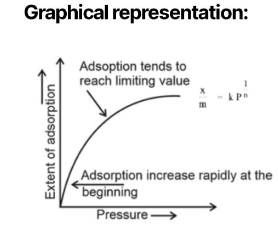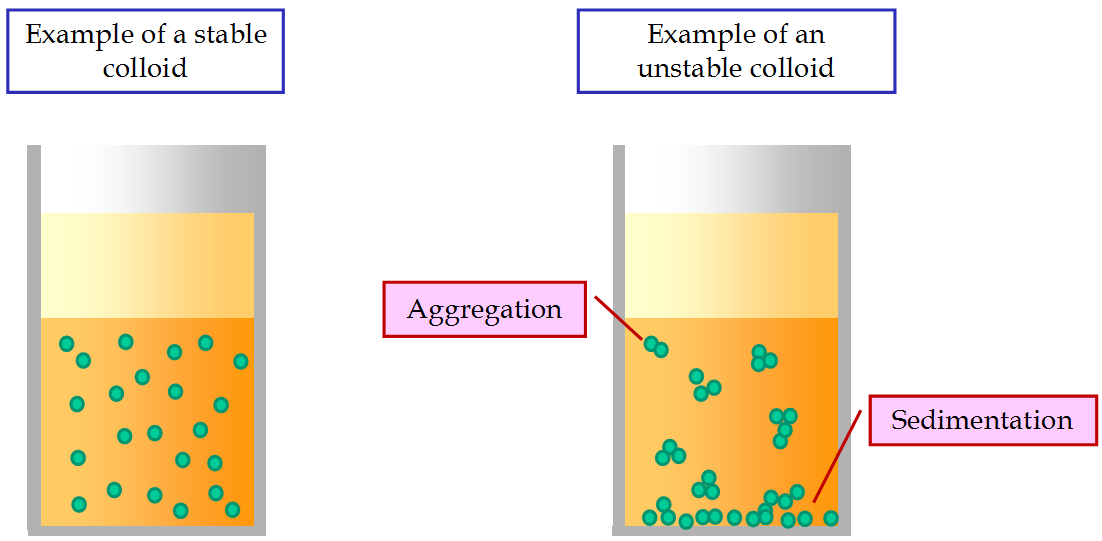5 - Surface Chemistry
Enroll to start learning
You’ve not yet enrolled in this course. Please enroll for free to listen to audio lessons, classroom podcasts and take practice test.
Interactive Audio Lesson
Listen to a student-teacher conversation explaining the topic in a relatable way.
Introduction to Adsorption
🔒 Unlock Audio Lesson
Sign up and enroll to listen to this audio lesson

Today, we’re diving into the concept of adsorption. Can anyone define what adsorption is?

Isn’t it when molecules accumulate on a surface?

Exactly! Adsorption is the accumulation of molecules, known as adsorbates, on a surface, which we call the adsorbent. It's important for processes such as catalysis and filtration. Can you think of anyone daily applications?

Like how water filters work?

Good example! Now, adsorption can be classified into two types: physical and chemical adsorption. Can anyone tell me a key difference between the two?

Is it about the forces involved?

Spot on! Physical adsorption involves weak van der Waals forces, while chemical adsorption involves the formation of chemical bonds. Remember the mnemonic 'Physisorption is Weak (PW) and Chemisorption is Strong (CS).' Can you recall some factors affecting adsorption?

Surface area and temperature, right?

Absolutely! We also include the nature of the adsorbate and adsorbent, pressure, and the activation of adsorbents. Great work! Let’s summarize key points: Adsorption is the accumulation of adsorbates on adsorbents, with physical and chemical types, influenced by several factors.
Adsorption Isotherms
🔒 Unlock Audio Lesson
Sign up and enroll to listen to this audio lesson

Now, let's discuss adsorption isotherms. What do you think they represent?

Is it how much gas is absorbed at different pressures?

Right again! Adsorption isotherms graphically show the relationship between gas adsorption and pressure at constant temperature. One example is the Freundlich adsorption isotherm. Can anyone give me the equation?

It's x/m = kP^(1/n)!

Correct! Here, x is the mass of the adsorbate, m is the mass of the adsorbent, P is the pressure, and k and n are constants. Understanding this allows us to predict how gases behave at different pressures. Let’s summarize: Adsorption isotherms illustrate the relationship between gas adsorption and pressure. The Freundlich equation helps us quantify this relationship.
Introduction to Catalysis
🔒 Unlock Audio Lesson
Sign up and enroll to listen to this audio lesson

Next, we’re moving on to catalysis! Can someone explain what a catalyst does?

It speeds up reactions, right?

Exactly! A catalyst increases the rate of a chemical reaction without being consumed. Can anyone differentiate between homogeneous and heterogeneous catalysis?

Homogeneous is when they’re in the same phase, and heterogeneous is in different phases.

Correct! That’s an important distinction. Remember the acronym 'Homo Same, Hetero Different' (HSHD). Catalysts can also be affected by promoters, which increase activity, and poisons, which decrease it. What’s an example of a promoter?

Molybdenum in the Haber process?

Exactly! So, key summary: Catalysis increases reaction rates; we have homogeneous and heterogeneous types, with effects from promoters and poisons.
Mechanism of Catalysis
🔒 Unlock Audio Lesson
Sign up and enroll to listen to this audio lesson

Let’s delve into the mechanism of catalysis. What happens when reactants meet a catalyst?

They get adsorbed on the catalyst surface?

Exactly right! They adsorb onto the catalyst surface, the reaction occurs, and then products are desorbed. It’s a cyclic process. Can anyone summarize the steps?

1) Adsorption, 2) Reaction, 3) Desorption, and 4) Regeneration of active sites.

Well done! This is crucial in industrial applications. So remember, the catalyst is key to speeding up reactions by facilitating the process through these steps.
Understanding Colloids
🔒 Unlock Audio Lesson
Sign up and enroll to listen to this audio lesson

Finally, we’re on to colloids. What defines a colloid?

It’s a heterogeneous mixture with one substance finely divided in another!

Correct! Colloids can be classified based on their dispersed phase and medium. Can someone give examples of colloidal systems?

Like fog or gel?

Exactly! Fog is an aerosol, and jelly is a gel. Colloids have unique properties such as the Tyndall effect and Brownian motion. What’s the Tyndall effect?

The scattering of light by colloidal particles!

Excellent! Summarizing, colloids are heterogeneous mixtures with unique properties that can be classified in various ways. They are essential in many applications, such as emulsions, which are mixtures of two liquids.
Introduction & Overview
Read summaries of the section's main ideas at different levels of detail.
Quick Overview
Youtube Videos



Audio Book
Dive deep into the subject with an immersive audiobook experience.
Introduction to Surface Chemistry
Chapter 1 of 1
🔒 Unlock Audio Chapter
Sign up and enroll to access the full audio experience
Chapter Content
Surface Chemistry is a fascinating branch of chemistry that deals with phenomena occurring at the interfaces of different phases—particularly solid-liquid, solid-gas, and liquid-gas interfaces. It plays a crucial role in everyday life and in industrial applications such as catalysis, detergency, corrosion, colloidal systems, and adsorption processes.
Detailed Explanation
Surface Chemistry studies how substances interact at their boundaries, such as between solids and liquids or gases, and between liquids and gases. This field is important because many chemical reactions and processes occur at these interfaces. For example, it is crucial in cleaning products (detergency), chemical reactions in industries (catalysis), preventing material degradation (corrosion), and in creating stable mixtures known as colloids.
Examples & Analogies
Consider how soap works. Soap molecules have one end that loves water (hydrophilic) and another that hates water (hydrophobic). When washing your hands, the soap molecules gather at the boundary between the dirt and water, helping to lift the dirt away. This is a perfect example of surface chemistry in action.
Key Concepts
-
Adsorption: Accumulation of molecules on a surface.
-
Physisorption: Weak adsorption, reversible.
-
Chemisorption: Strong adsorption, often irreversible.
-
Catalyst: A substance that accelerates reactions without being consumed.
-
Colloids: Heterogeneous mixtures of fine particles in a medium.
-
Tyndall Effect: Light scattering by colloidal particles.
Examples & Applications
A shaving cream is an example of a foam colloid.
Fog is an example of an aerosol colloid.
Memory Aids
Interactive tools to help you remember key concepts
Rhymes
Adsorption gathers, both weak and strong, on surfaces they belong.
Stories
Once upon a time, in a factory, the catalyst was the hero, speeding up every reaction without ever being consumed, helping everyone work together smoothly.
Memory Tools
Powers in Adsorption: 'Physisorption is Weak and Reversible (PW), Chemisorption is Strong and Irreversible (CS)'.
Acronyms
CATS - Catalysts Accelerate The Speed of reactions.
Flash Cards
Glossary
- Adsorption
The process of molecules accumulating on the surface of a solid or liquid.
- Physisorption
Weak adsorption involving van der Waals forces, often reversible.
- Chemisorption
Strong adsorption involving the formation of chemical bonds, typically irreversible.
- Catalyst
A substance that increases the rate of a chemical reaction but remains unchanged.
- Colloid
A heterogeneous mixture with fine particles distributed within another substance.
- Emulsion
A type of colloid where both dispersed phase and dispersion medium are liquids.
- Tyndall Effect
The scattering of light by colloidal particles.
- Brownian Movement
The random zigzag motion of particles in a fluid.
Adsorption
Adsorption is defined as the accumulation of molecules, known as the adsorbate, on the surface of a solid or liquid, referred to as the adsorbent, forming a thin film. There are two primary types:
1. Physical Adsorption (Physisorption): Characterized by weak van der Waals forces, allowing multilayer adsorption and being reversible with low heat of adsorption.
2. Chemical Adsorption (Chemisorption): Involves the formation of chemical bonds, typically resulting in monolayer formation and a higher heat of adsorption. ![Physisorption and chemisorption processes. Reproduced from ref [42]. | Download Scientific Diagram](https://www.researchgate.net/publication/384936653/figure/fig1/AS:11431281421317170@1746327569255/Physisorption-and-chemisorption-processes-Reproduced-from-ref-42.png)
Factors affecting adsorption include the nature of both the adsorbent and adsorbate, the surface area of the adsorbent, temperature effects, and pressure, especially for gases. Adsorption isotherms, such as the Freundlich Adsorption Isotherm, graphically depict the relationship between gas adsorption and pressure.
Catalysis
Catalysis is the acceleration of a chemical reaction through a catalyst, which remains unchanged. It can occur in two forms:
1. Homogeneous Catalysis: Where the catalyst and reactants are in the same phase.
2. Heterogeneous Catalysis: Involves different phases for the catalyst and reactants. Catalysts can be affected by promoters (increase activity) and poisons (decrease activity). The mechanism involves adsorption of reactants on the catalyst's surface, leading to the reaction and desorption of products.
Colloids
A colloid is a heterogeneous mixture in which fine particles (dispersed phase) are distributed within another substance (dispersion medium). Colloids are classified based on the physical state of the dispersed phase and dispersion medium, their interactions, and the type of particles involved. Properties of colloids, such as the Tyndall effect and Brownian motion, are important for their behavior and applications. Special forms of colloids include emulsions, which are mixtures of two liquids.
In conclusion, Surface Chemistry encompasses crucial processes that enhance our understanding of material behaviors and their applications in numerous industrial and daily contexts.
Reference links
Supplementary resources to enhance your learning experience.
